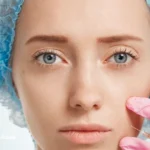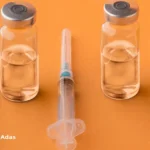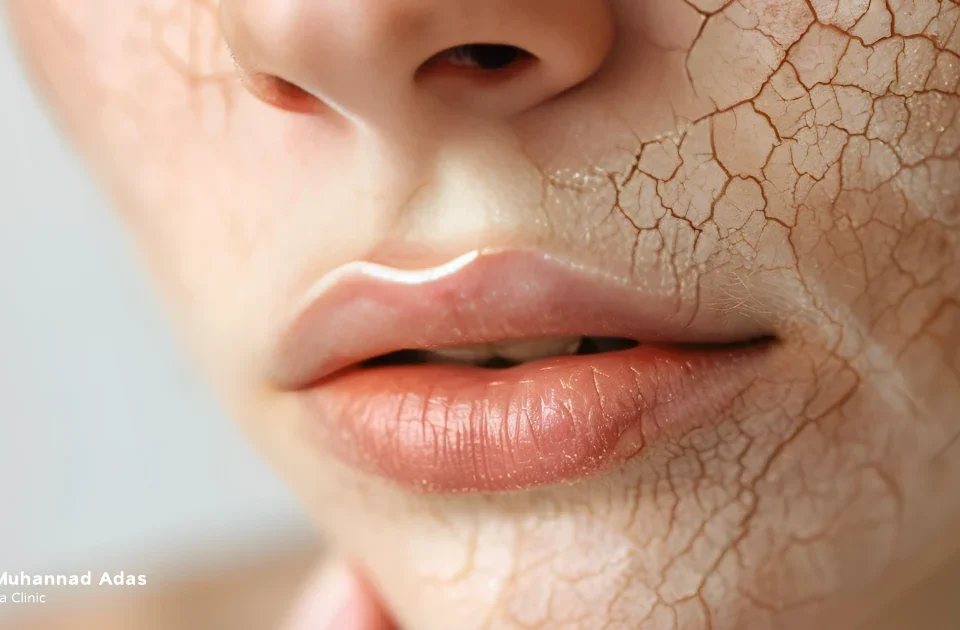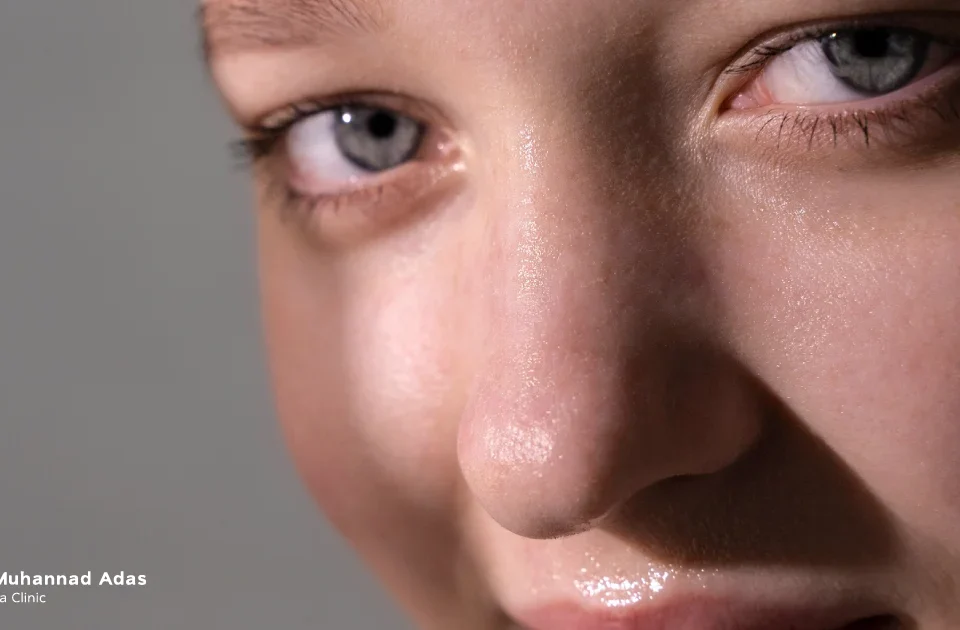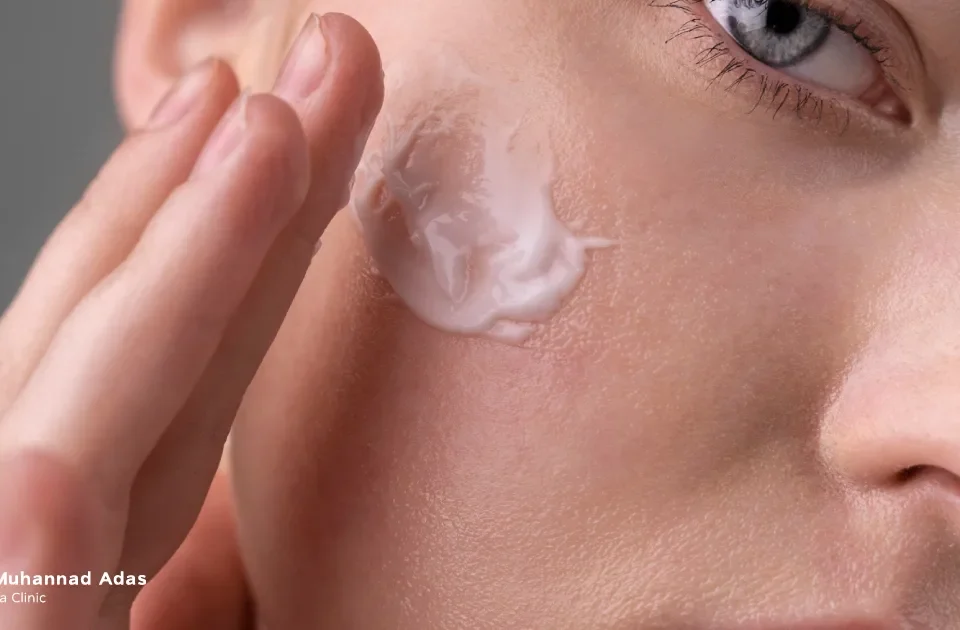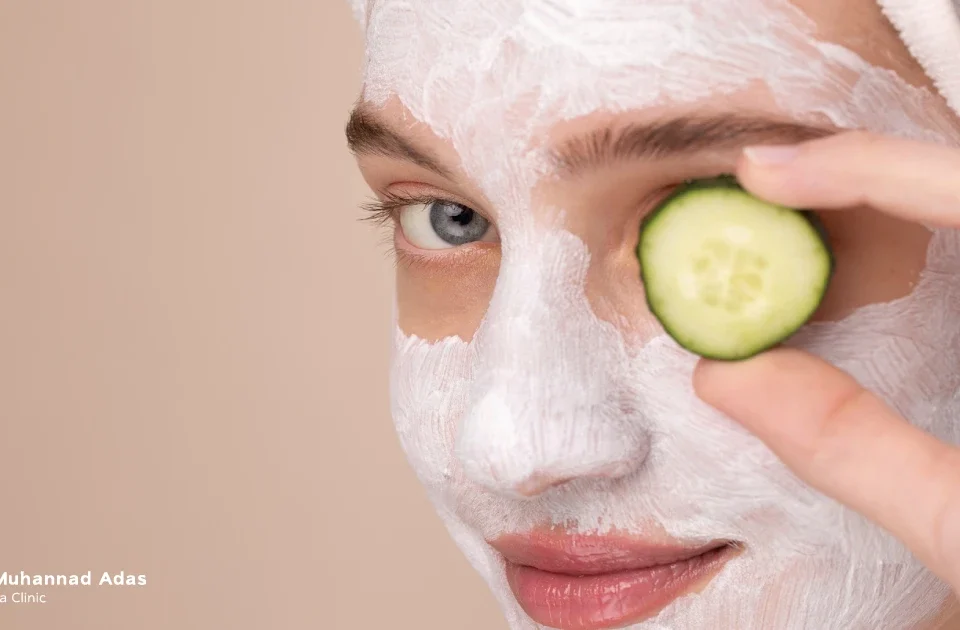Table of Contents
Hydrafacial is a magic technique that does wonders to your face, giving your skin a luminous and rejuvenated appearance within a few minutes. The Hydrafacial session involves many steps that will help you revitalise your skin before a special occasion or an important event. Unlike other skin treatments, Hydrafacial stands out as it is suitable for all skin types, even sensitive skin. It is also the best option for those who have a low pain tolerance and are seeking a minimal procedure.
So do you suffer from skin dullness, annoying blackheads and other different skin concerns? If your answer is yes, I encourage you to read this detailed article about your next Hydrafcial session.
What is Hydrafacial?
It is a cosmetic treatment that is performed by a dermatologist or a hydrafacial specialist. It is considered essential in different cases such as deep cleansing and pore size reduction, and revitalising the skin and helping it restore its radiance. Although this procedure is minimal and non-invasive, it has many visible and direct beneficial results on the skin.
This procedure is performed via a device called Hydrafacial through an instrument that resembles a pen which is known as a Hydrapeel. This tool is connected to the Hydrafacial machine to deliver the important substances & vitamins and pump them into the skin. This pen-like equipment is composed of many tips that are changed according to the treatment’s steps. It works in a circular motion deep cleaning and mildly exfoliating the skin by using fruity acids.
Hydrafacial vs Normal Skin Cleansing: What Is The Difference?
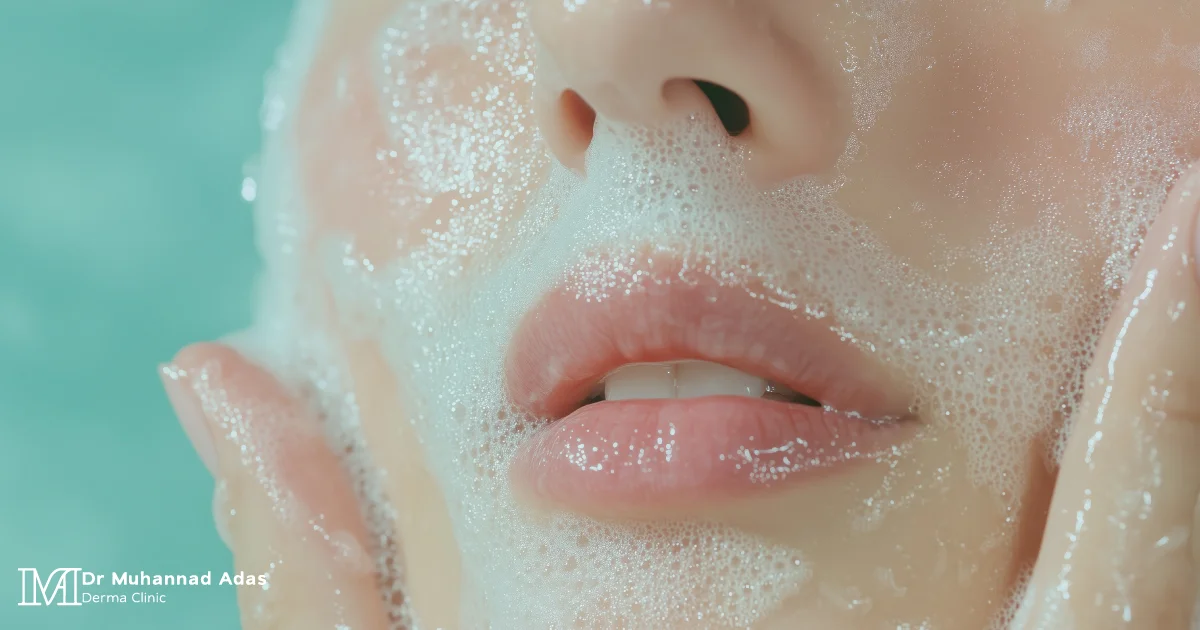
Skin cleansing is a part of any skincare routine, it removes excess dirt and oils, which helps the skin keep healthy and reduces the appearance of blemishes and blackheads.
Skin cleansing methods vary, some of them are done at home through using the usual cosmetic products; such as cleanser and toner and others are done through advanced skincare sessions. For Hydrafacial, it is performed by a dermatologist or a skincare specialist at the clinic, and that is to improve the skin’s appearance by hydrating it and nourishing it through vitamins which are beneficial for different skin concerns such as reducing pores and and restoring the skin’s radiance. Hydrafacial also consists of many steps such as cleansing, exfoliating and hydration which are all combined through advanced tools used by skilled professionals.
To summarise, unlike normal skin cleansing which removes superficial impurities, the Hydrafacial technique is considered a comprehensive treatment designed to reduce various skin care concerns; such as fine lines and uneven skin tone and many more.
Before and After the HydraFacial Session

The benefits of a hydrafacial session is not limited to improving the outer skin layer only. When repeated, it also improves the skin’s inner condition by providing it with essential nutrients. Additionally, the HydraFacial technique can be combined with various other treatments as it is a gentle yet effective treatment that is customized to the individual’s skin type.
In the images below, you can see the before-and-after results of a HydraFacial session. You will clearly find an instant facial glow, removal of blackheads, and an overall improvement in skin condition. HydraFacial also works to reduce the appearance of acne scars and irritation.
10 Benefits Of Hydrafacial Sessions
There are many benefits to hydrafacial which will leave you pleased and satisfied you after your session:
- Minimise pores and faded spots.
- Diminished wrinkles and fine lines.
- Treatment of hyperpigmentation and lightening of discoloured skin.
- Restoration of skin radiance and improved texture.
- Reduced oil production and a glowy appearance for those with oily skin.
- Elimination of blackheads & whiteheads.
- Instant and visible results, a consequence of stimulated collagen in the epidermis.
- A specialised technique, which is done by using personalised serums according to the customer’s skin concerns.
- Dead skin cells elimination.
- Reducing the appearance of blemishes.
Hydrafacial Steps For a Luminous Skin
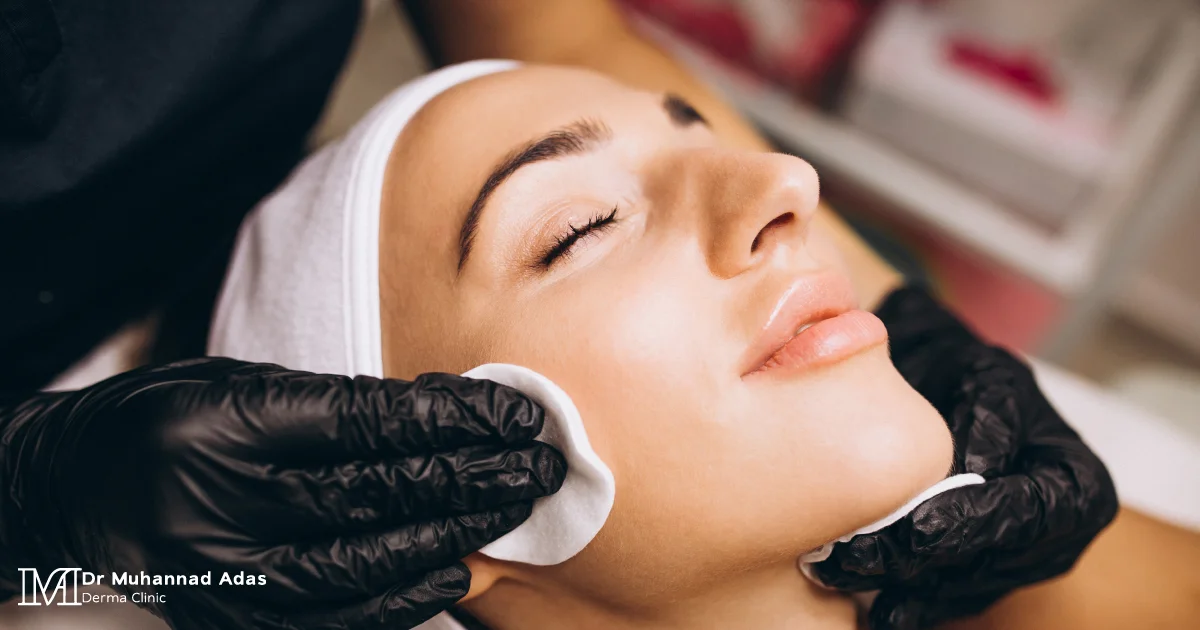
To get a rough idea of the Hydrafacial technique, it is necessary to know the steps involved in a typical session at the dermatology clinic:
Deep skin cleaning
The appropriate serum is injected according to your skin type using the vacuum technology, which consists of a number of different nourishing components that deeply hydrate the skin. This first technique prepares the skin for the next step.
Skin exfoliation
Exfoliating the skin is performed several times with each pass of the device, using a gentle suction technique that does not cause any complications or irritation. This step removes dead skin cells, in addition to applying a mixture of glycolic acid and salicylic acid.
Extraction of impurities
A gentle acidic solution or mild chemical peel is applied on the face to help remove impurities and dirt easily and without pain using a suction tool such as the vacuum. The formulas and mixtures used are based on the skin type of the customer.
Skin hydration
Now, your skin needs hydration. After performing the previous steps, your skin is allowed to breathe and is in need of suitable formulations to revitalise it. A serum rich in peptides, antioxidants and hyaluronic acid is applied on the face and left for a small period of time so the skin can absorb it and get the maximum benefit.
LED light application
This technique is not used in all clinics but by some of them. Blue light is applied on the skin to get rid of acne-causing bacteria and to purify the pores. Red light therapy is also used for skin that suffers from the appearance of wrinkles, to stimulate collagen production and tighten skin.
What Are The Substances That Make Up The Hydrafacial Serum?
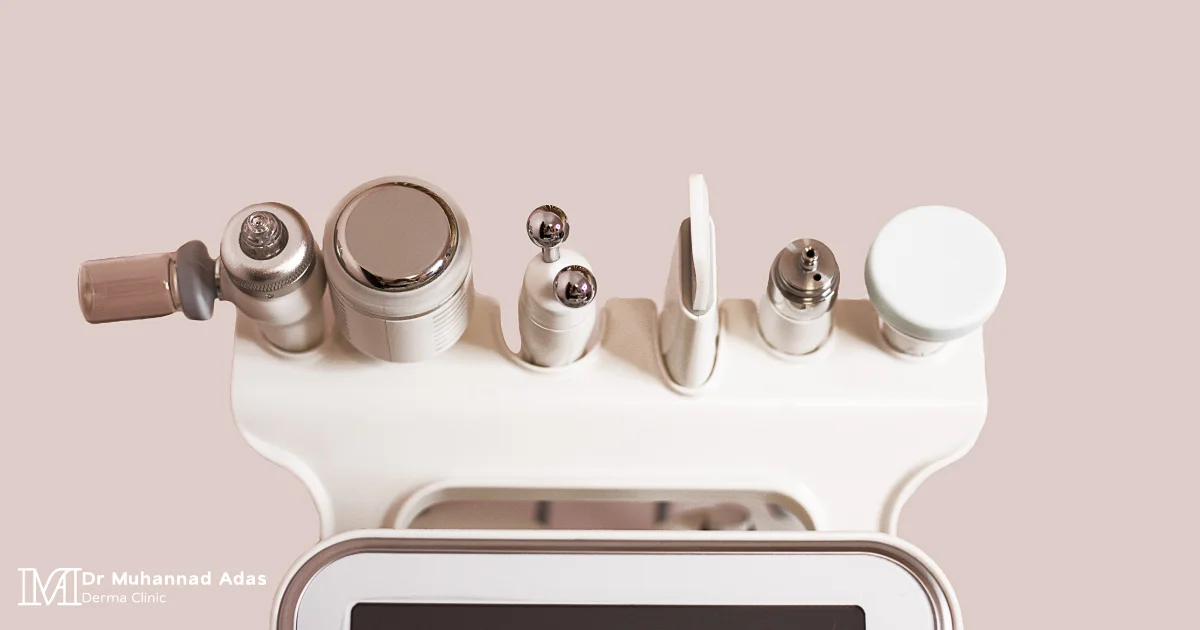
The Hydrafacial serum components differ depending on the skin type and its concerns. If the skin is suffering from hyperpigmentation or discoloured skin then a skin-lightening agent may be necessary. For dry skin, antioxidants and vitamins are beneficial. Some serums may contain different beneficial ingredients such as vitamins to revitalise and deeply nourish the skin and antioxidants, peptides and other hydrating agents.
5 Reasons To Book A Hydrafacial Session
What makes Hydrafacial so unique even though there are a number of skincare techniques that are known to improve the skin’s health? Hydrafacial is considered a gentle alternative to other skin treatments which are harsher and more prone to complications. Here are the reasons that will make the Hydrafacial session worth it and will rush you to book one:
- Suitable for all skin types: Usually sensitive skin is avoided in most skin care treatments, but in Hydrafacial, if you have sensitive, oily or dry skin then it is suitable to do this procedure.
- Instant & visible results: Hydrafacial is characterised by instant & noticeable skin results. That is why it is recommended to get a session done before special occasions to achieve instant radiance.
- Lack of period recovery: Unlike other skincare techniques, Hydrafacial stands out because of how gentle it is on the skin and does not negatively affect it, especially when you listen and apply the advice given by your dermatologist or Hydrafacial specialist before and after the session.
- Short session time: The session is about half an hour on average, which is a very reasonable time for the excellent results it provides.
8 Pre Hydrafacial Tips
To get the optimal benefit of the Hydrafacial session, it is important to take into consideration the instructions given by the Hydrafacial specialist or the clinic. In addition to applying these tips:
- Stop using Retinol for at least 48 hours before the session.
- Avoid performing facial peeling at home for at least 48 hours before the session.
- Avoid chemical peel sessions and laser sessions for at least 2 weeks before the Hydrafacial session.
- Make sure that the clinic you are going to is using the original American Hydrafacial MD machine.
- Avoid using anything that could cause irritation such as; shaving blades, wax and other hair removal tools for 2 days before your session.
- Do not use any acne treatment creams such as; Salicylic acid and Benzoyl Peroxide for 48 hours before the session.
- Avoid sunlight exposure for at least 3 days before the session.
- Do not get any botox injection procedure for at least 2 weeks before the Hydrafacial session.
8 Post Hydrafacial Tips
The skin might be sensitive after the Hydrafacial session which is a normal thing to occur since exfoliation was a part of the performed steps. That is why it is essential to follow the tips given by the dermatologist after getting a Hydrafacial session:
- Avoid extreme heat exposure such as in; steam baths, saunas and sunlight rays after the session for 3 days.
- Use a gentle cleanser on the skin the day following the session and it is preferred to use a medical cleanser.
- It is preferred to use a Hylarounic acid rich serum for 30 days AM and PM after the session.
- Be consistent and use a sunblock before going out daily, especially in the first 5 days following the Hydrafacial session.
- Avoid using Retinol based creams for 48 hours after the session.
- Avoid using anything that could cause irritation such as; shaving blades, wax and other hair removal tools for 48 hours after your session.
- It is best to avoid applying makeup products the day of the session and the day after.
- Avoid swimming pools after the Hydrafacial session.
Most Commonly Asked Questions Regarding Hydrafacial Sessions
How frequently should I get Hydrafacial Sessions?
For the best results, it is recommended to get Hydrafacial sessions monthly.
Can I use Retinol with Hydrafacial?
It is not preferred to use Retinol creams before and after the session for 48 hours, while maintaining the skin’s hydration.
How long does the session take?
It usually takes between 30-45 minutes and the effect is directly observed after the session. The skill will look brighter and the pores will be more pure.
Is Hydrafacial painful?
Hydrafacial is special for its painless process as the device works by applying various steps through different tips which work via a gentle suction and vacuum techniques on the skin.
How long do the results last?
The results last from 4 to 6 weeks, that is why it’s recommended to repeat the session every month for maximal benefits.
What is the difference between Hydrafacial and Deep-cleaning?
Deep cleaning might be painful compared to Hydrafacial. It is also a superficial procedure while Hydrafacial is a deeper one. When cleaning the skin, the tools are simpler. Hydrafacial contains the technique and tools that could clean the skin inside out.
Who are the best candidates for Hydrafacial sessions?
Anyone who suffers from wrinkles, fine lines, and blemishes. In addition to stubborn dark spots on the skin and people whose skin has a high oil production and especially people with oily skin types.
Now, did we answer all your questions? Do you have any other questions? Book your appointment by calling the clinic’s number (+962) 799377600 or visit our website dradas.com.
